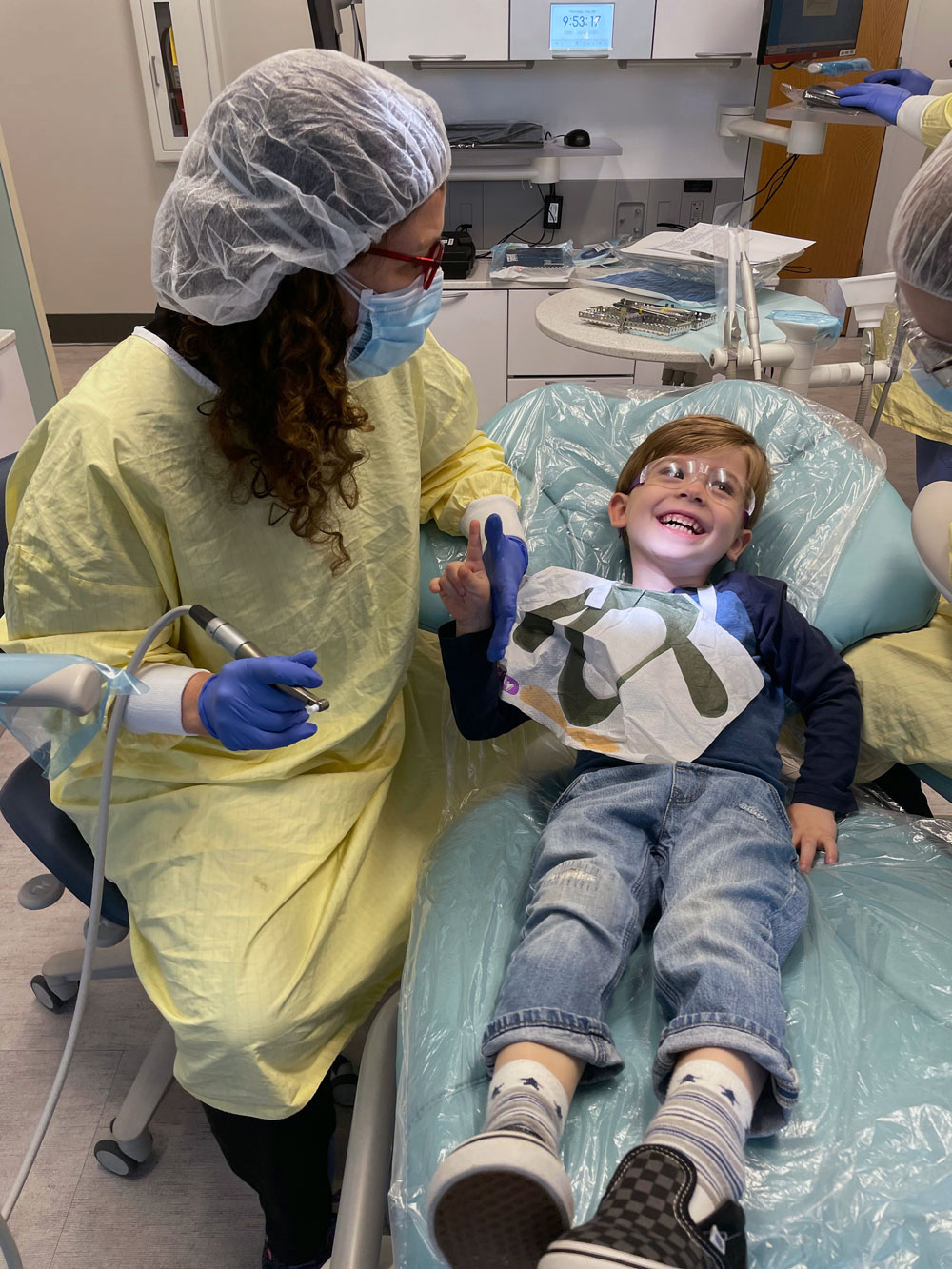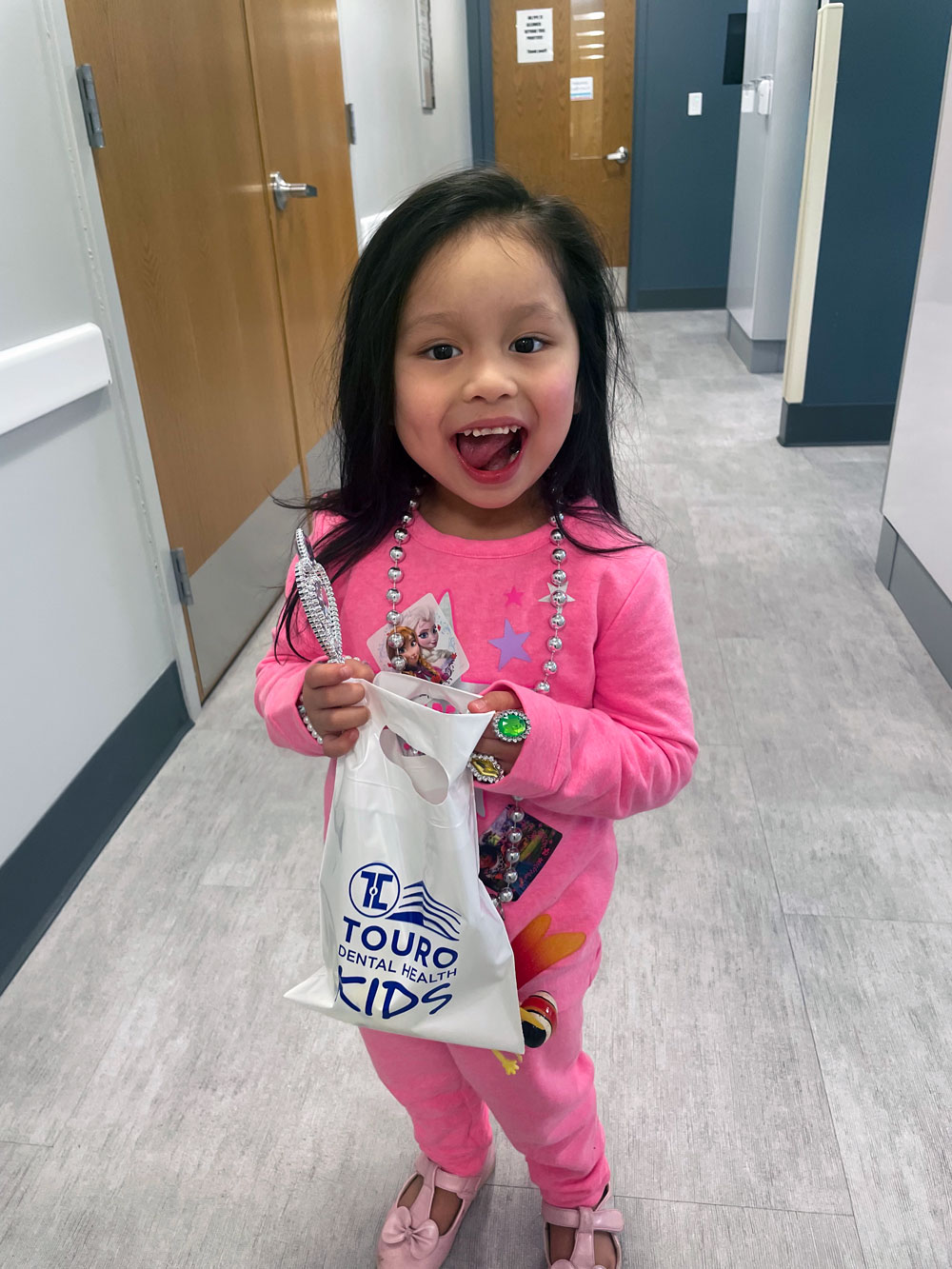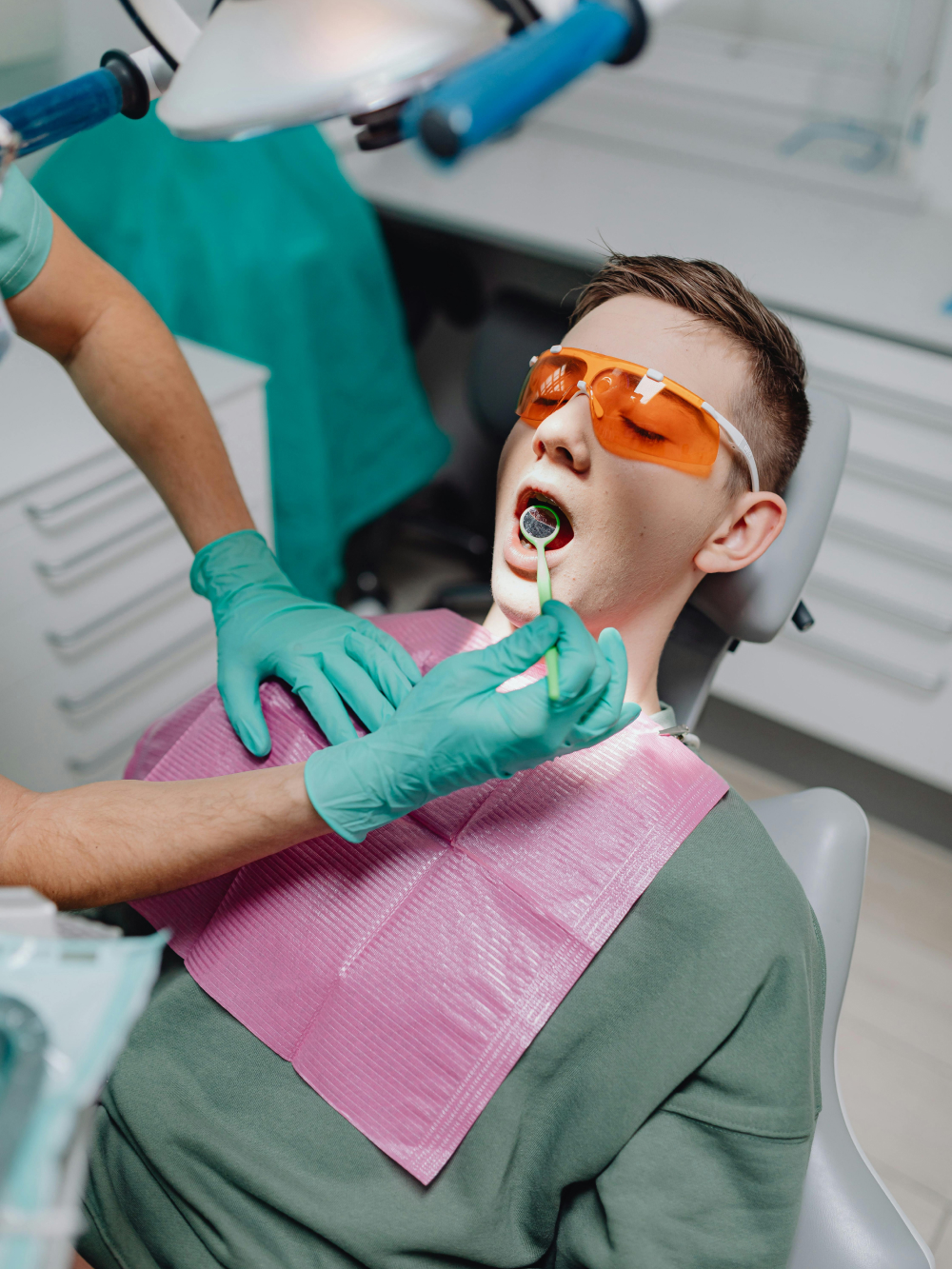
Baby Teeth Care at Touro Dental Health Kids
We’re here to help you care for your child’s baby teeth. Baby teeth are important for speech, self-esteem, and to guide the permanent (adult) teeth into their correct position. Below are guidelines for the kind of tooth care needed throughout childhood.
What Does Dental Care Look Like at Age 0-3 Years?
- Find a dentist and get your child comfortable in the dentist’s office
- First dental appointment at first tooth or first birthday
- No sleeping with bottle
- Fluoridated toothpaste - grain of rice sized amount
Good oral hygiene is important even before your baby has teeth showing. A positive attitude towards oral care throughout childhood is important for long term success.

Before your child has teeth showing you can practice oral hygiene by wiping their mouth with a soft cloth. This will accustom your child to brushing their teeth.
It is important to get your child comfortable in the dental office. Their first dental appointment can be after the first tooth shows or their first birthday.
Children younger than three should have an adult help or supervised teeth brushing twice a day. Using toothpaste with fluoride will strengthen their teeth. Use a smear of toothpaste the size of a grain of rice. Discuss fluoride supplements with your pediatric dentist to best prevent cavity formation.
After eating most foods, your mouth becomes more acidic. Limiting the frequency of snacking to mealtime decreases the amount of time the teeth need to battle an “acid attack.” Tooth-healthy snacks include milk, yogurt, and cheese.
Do not put your baby to sleep with a bottle. Milk or sugary juice puts the teeth under an “acid attack” all night.
See your dentist every six months.
What Does Dental Care Look Like at Age 3-6 years?
- Adult supervision during brushing
- Encourage good habits, brushing and flossing
- Fluoridated toothpaste - pea sized amount
- Limit snacks to mealtimes

It is important to teach your child good oral hygiene habits. Your child should brush their teeth at least twice a day. Once in the morning and before bedtime with adult assistance. After brushing, spit out the excess, but don’t rinse out with water to let the toothpaste’s fluoride stay on the teeth, adding cavity protection. At three years old, you should start brushing with a pea size amount of fluoridated toothpaste. Toothbrushing does not clean every part of the tooth. Floss helps clean out the in-between area of teeth. Consider using flossers that are easy to use. Also, gently brush the gums to minimize bacteria buildup.
Limit snacking to mealtimes and consider snacks such as yogurt, cheese, and milk which promote dental health.
Limit sugary drinks to less than 6 ounces per day.
Adult molars start coming in at around six years old. Discuss a preventative treatment called sealants with your dentist to prevent decay in their adult teeth that we want to last our children a lifetime.
Discuss the possible need for fluoride supplementation with your dentist.
See your dentist every six months to monitor and detect any cavities.
What Does Dental Care Look Like at Age 6-16 years?
- Encourage good habits, brushing, and flossing
- Fluoridated toothpaste
- Smart snacking – yogurt, cheese, and milk
Continue to teach good oral hygiene habits that will set your child up for success. Your child should be brushing with fluoridated toothpaste at least twice a day. Brushing once in the morning and once before bedtime and flossing nightly. Parents can continue to supervise their children brushing until around age seven or when the child can tie their shoes on their own.

Continue to promote healthy snacks such as yogurt, cheese, and milk which promote good oral health. Avoid sugary gums and drinks. Avoid carbonated beverages which are highly acidic.
It is important to monitor, with the help of your child’s dentist, their tooth eruption and spacing as teeth may be crowded or impacted. Additionally, make sure to protect your child’s teeth with a mouth guard when they participate in sports activities.
Continue with your dental visits every six months to monitor development and detect decay early.

